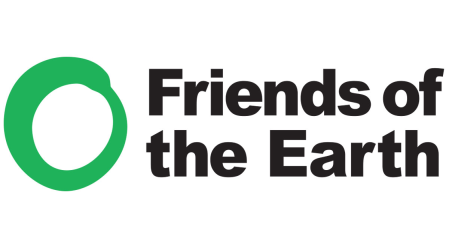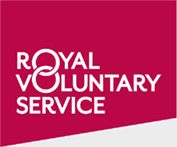We know that charities rely on legacy fundraising. Through our conversations with clients, we hear that for many of the larger non-profits, legacies account for anywhere between a third and half of their fundraising income.
But we also know that there are many reasons charities don’t implement a legacy telemarketing campaign, whether that’s down to thinking that it’s not worth the investment, or perhaps it’s only viable for larger charities, or that it’s simply really uncomfortable instigating conversations about a supporter’s mortality.
Yet legacy fundraising consistently produces the best ROI of any fundraising activity, so it makes sense that it should sit at the top of your fundraising strategy, with the highest priority. So let’s clear up some of those misconceptions around legacy marketing!
A legacy marketing campaign is not about ringing supporters and asking if they will leave a gift to a charity. It’s about finding out where supporters are on their donor journey.
Starting with a large data set, we initiate
conversations which culminate in refining supporters into three categories:
– Are they an ‘enquirer’ (requesting information on how to leave a legacy)
– Are they an ‘intender’ (stating an intention to include your charity in their
will)
– Or are they a ‘pledger’ (having already included your charity in their will)?
The success of a legacy marketing campaign lies in filtering and targeting the data; contacting a large number of supporters to ascertain who is truly interested in leaving a gift in their will and what information they require to progress their interest. We segment the results for you and you can then focus on meeting the different needs of potential legacy givers, and help and support them to understand the importance to the charity of a gift being left in a will.
This approach not only increases your awareness of your supporters’ intentions, but it means you can then monitor their legacy marketing status and cultivate those relationships as appropriate. It means you can clearly target your marketing communications – and budget – accordingly.
Of course, it only takes a couple of really good pledges for the campaign to pay off – and even 1% of an estate left as a gift will make a massive difference to a charity. The returns definitely outweigh the costs, as confirmed by Anna Mynott, Legacy Manager for Friends of the Earth:

“QTS recently delivered Friends of the Earth’s first legacy telemarketing campaign, which was a slightly nerve-wracking but very exciting project.
Having worked with QTS before, I knew the team would have genuine, sensitive conversations with our supporters about leaving a gift in their will. Being able to lean on their expertise and experience, as well as being able to change and adapt the campaign as we went along, made for a very reassuring and collaborative experience.
The campaign did fantastically well, with almost 50% of the supporters we spoke with saying they would consider leaving a gift in their will to Friends of the Earth. There were also many learnings from our data and approach which will help shape our next campaigns with Ben and the team.”
Addressing Anna’s comments on data and approach, we can confirm that the scope of legacy marketing is huge, because the initial call can go to anyone (TPS permitting) who has interacted with your charity. Even categories such as lapsed supporters can have a significant effect on this type of campaign. But by its very nature, legacy marketing consists of delicate topics and conversations with an individual – and this is where our team shines.
We only select experienced callers for these campaigns, who understand that these calls require a kind and sensitive style. We take the opportunity to thank supporters, update them on the current position of the charity and quite simply have a conversation – the focus is ensuring the supporter knows what an impact they are making by continuing their support for the charity, and how much that support is valued. This gentle attitude can have a very powerful impact, as Thom Holland, Senior Individual Giving Manager at Family for Every Child confirms:

“We have worked with QTS twice in recent years on delivering our legacy telemarketing campaign. We have a long standing relationship with QTS and have found them to be reliable, flexible and strategic; they always come with a wealth of knowledge of the UK telemarketing market.
We work closely with QTS on data selections, guideline creations and all facets of the campaign, they are collaborative and experienced. QTS callers take an excellent approach with our supporters (we have never received a complaint on a QTS campaign), the callers are direct but not pushy, warm and friendly but also concise – call listening always demonstrates a clear understanding of our donor base and their interests.
Our initial campaign generated an outcome of 12% pledgers against a target of 5%, and 34% considerers against a target of 25%. This was an excellent result and we also saw a significant uplift in interest in our Legacy brochure and free will writing service.”
As with Tom’s campaign, many of our clients will ask us to follow up an initial legacy campaign with a second campaign, gently following up and checking whether supporters received the information they requested and whether they require anything else. And if you want us to send out any follow-up information on your behalf, we can do that for you.
So you should feel assured that calling 500 supporters will have a much bigger impact than mailing 60,000 supporters – because it’s all about the human connection; a telephone conversation is the only way to directly connect with supporters and leave them feeling really good about themselves. And while you can follow up telemarketing with other marketing channels, when it comes to legacy campaigns, the only way to ensure that the first point of contact is sensitive, thoughtful and engaging is with a telephone call.
Sanita Guddu, Fundraising Consultant and Interim Legacy support at Royal Voluntary Service adds:

“I first started working with QTS following a vigorous tender process of which they came up trumps! Since then QTS have never failed to provide outstanding results whether that be calling the supporter base to introduce the idea of legacy giving or to stewarding legacy enquirers. I’ve seen them achieve conversion rates as high as 23%!
In addition to that Ben and his team are a total pleasure to work with. Their knowledge about legacy giving combined with their extensive experience of talking to supporters makes every campaign easy to implement and manage. I especially have enjoyed training their callers who take a personal interest in the cause that they are working on.
I am confident that based on the calls that QTS have made that relationships with supporters and volunteers has been strengthened – which is totally priceless.”
In summary, an effective legacy telemarketing campaign will really help you with legacy forecasting, donor profiling, and personalising your approach to the different supporter segments. We genuinely believe that it needs to be an important part of your fundraising strategy and that you should never be scared of contacting potential donors. Instead, you should be regularly updating them, thanking them for their support and making them feel valued – and this is even more important for nurturing pledgers.
Want to chat to us about this topic? Do give us a call or drop us a line. We’d love to hear from you.
Alternatively you can download our legacy guide here.


